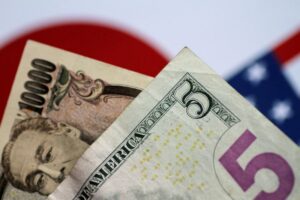Yen Rally: The Drivers Behind its Strength and Market Reactions
In recent trading sessions, the Japanese yen has surged, enjoying its strongest showing in over two months. This rally comes as investors increasingly position themselves for potential rate hikes from the Bank of Japan (BOJ) later this year. Speculation is rampant, fueled by both the BOJ’s communications and shifting geopolitical landscapes.
On Thursday, the yen climbed more than 0.8% to reach 150.15 per dollar. This upward momentum reflects growing investor confidence following communications from BOJ Governor Kazuo Ueda. Although he held a routine discussion with Japanese Prime Minister Shigeru Ishiba regarding the economy, the lack of conversation around rising long-term interest rates seems to have excited the market. Currency strategist Moh Siong Sim from the Bank of Singapore noted that this oversight might suggest that rising yields, which typically support a stronger yen, are not a concern for the BOJ. Hence, traders interpret it as a green light for further yen strength and possible rate hikes in the near future.
With Japan’s domestic data improving, investors are gradually leaning toward speculation that the BOJ could shift its monetary policy sooner rather than later, potentially spurred by rising inflation rates. As global economic recovery remains uneven, such changes in central bank policies will have profound implications.
Across the East China Sea, the onshore yuan also gained traction, appreciating slightly to 7.2682 per dollar. President Trump’s recent comments hinting at the possibility of a new trade deal with China helped to alleviate some immediate concerns about escalating trade tensions. Although he did not provide a timeline for a potential visit to the U.S. by President Xi Jinping, the market is interpreting these remarks as a cautious step toward de-escalation.
The dollar’s position, however, has been under pressure. Over the past few sessions, the greenback has traded sideways due to a lack of concrete action from the Trump administration regarding impending tariffs. Despite Trump indicating potential tariffs on lumber and forest products within the next month, traders remain skeptical of the actual impact of such announcements, often seen as negotiation tactics rather than firm policies.
The broader currency landscape paints a rich tapestry of responses to geopolitical statements. Sterling remains resilient, hovering near a two-month high, and traded at $1.2597, while the euro slightly rose to $1.0428 amidst mixed signals from the European Central Bank regarding inflation and economic growth.
Furthermore, the Australian dollar gained 0.28% to $0.6363 following a mixed employment report, which showed job growth outpacing forecasts in January, despite a marginal increase in the unemployment rate. Meanwhile, the New Zealand dollar also experienced a boost, reflecting a broader regional market response to nuanced economic indicators from their respective central banks.
It’s clear that currency markets are navigating through a complex matrix of geopolitical and economic factors, making it imperative for investors to stay updated. At Extreme Investor Network, we believe that understanding these fluctuations not only helps in making informed decisions but also in strategizing for the evolving market landscape. Investors should keep an eye on central bank communications, employment reports, and trade negotiations, as these could significantly impact currency valuations and broader market sentiment in the coming months.

